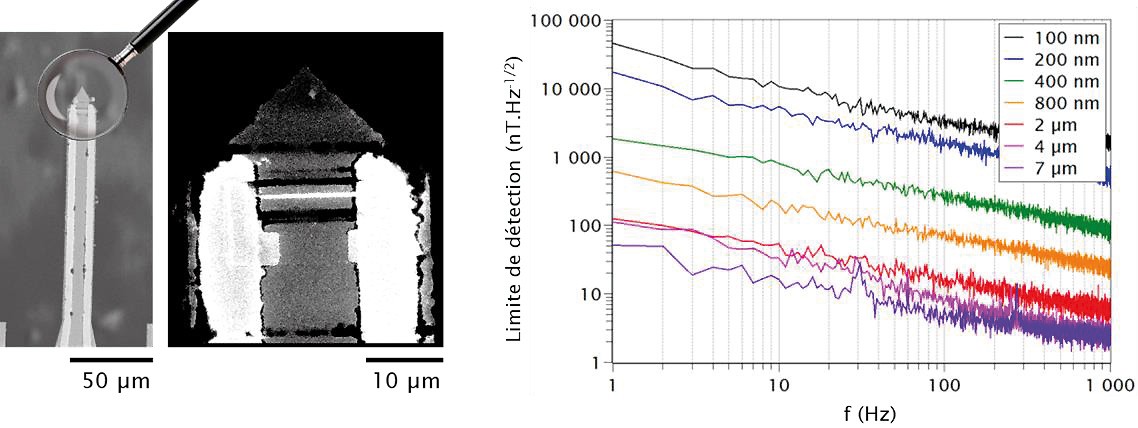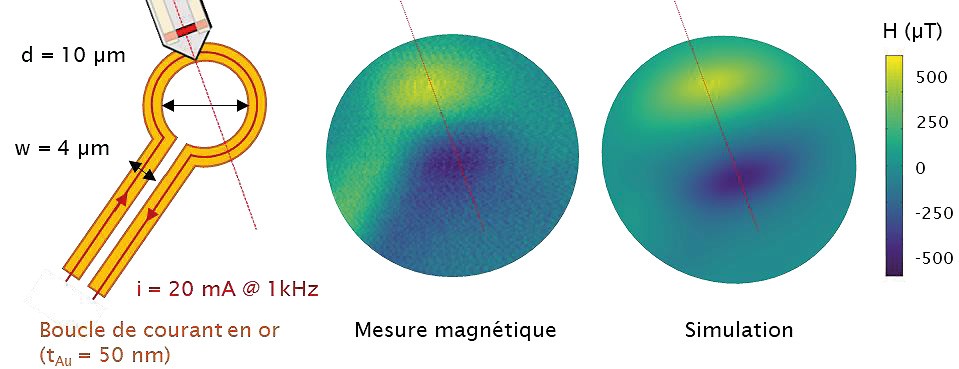Keynote Speaker
Dr. Aurélie Solignac
Scanning probe magnetic microscope with magnetoresistive magnetic sensors
J. Moulin¹, K. Dalla Francesca¹, A. Doll¹, E. Paul¹, M. Pannetier-Lecoeur¹, C. Fermon¹, N. Sergeeva-Chollet²
¹ SPEC, CEA, CNRS, Université Paris-Saclay, CEA Saclay, 91191 Gif-sur-Yvette, France
² CEA LIST, 91191 Gif-sur-Yvette, France
Giant and tunnel magnetoresistance effect, based on spin electronics, allows the development of very sensitive magnetic sensors whose size can be submicron. These sensors detect magnetic fields emitted by the sample surface in a quantitative way, with a detectivity of the order of few nT/√𝐻𝑧, and on a large frequency range (DC to the hundred MHz). These sensors are widely used for several applications from automotive to biological detection or non-destructive testing, current sensors or magnetometers [1][2].
In the lab, we develop a magnetic microscopy technology with submicrometer dimension by combining a scanning probe microscope and cantilevers with integrated MR sensors. This probe can be used to obtain topographical information about a sample, as well as its magnetic information, in a decorrelated manner. The measurement thus obtained by the GMR sensor is quantitative, broadband (DC-100 MHz), robust over time and does not require recalibration or regular re-magnetization of the probe. Imaging currents in electronic circuits or studying the structure of rocks, alloys and magnetic powders are all potential applications for this system [3]. In order to improve spatial resolution, while enhancing the linearity of the magnetic response and reducing magnetic measurement noise [4], one of our major areas of research is the development and integration of magnetoresistive nanosensors on these cantilevers, with characteristic sizes down to a hundred micrometers. These nanometric sensors have been fabricated in the laboratory, characterized and used to image magnetic calibration samples.


Figure 1: (Top - left) GMR nanosensor (400 nm wide) integrated on a flexible lever arm (SEM image). (Top - right) Plot of equivalent magnetic field noise (quantity fixing the detection limit of a magnetic field for a given frequency range) for different micrometric and nanometric GMR sensors. (Bottom) Image and simulation (Octave) of a current micro-loop seen by a GMR probe with a 400 nm sensor.
References:
[1] Caruso, L., Wunderle T., Lewis C. M., Neuron, 2017, vol. 95, n° 6, p. 1283.
[2] Cardoso, S., Leitao, D. C., Dias, T. M., J. Phys. D: Appl. Phys., 2017, vol. 50, n° 21, p. 213001.
[3] Takezaki, T., Yakisawa, D., Sueoka, K., Jap. J. Appl. Phys., 2006, vol. 45, n° 3B, p. 2251.
[4] Moulin, J., Doll, A., Paul, E., Appl. Phys. Lett., 2019, vol. 115, n° 12, p. 122406.